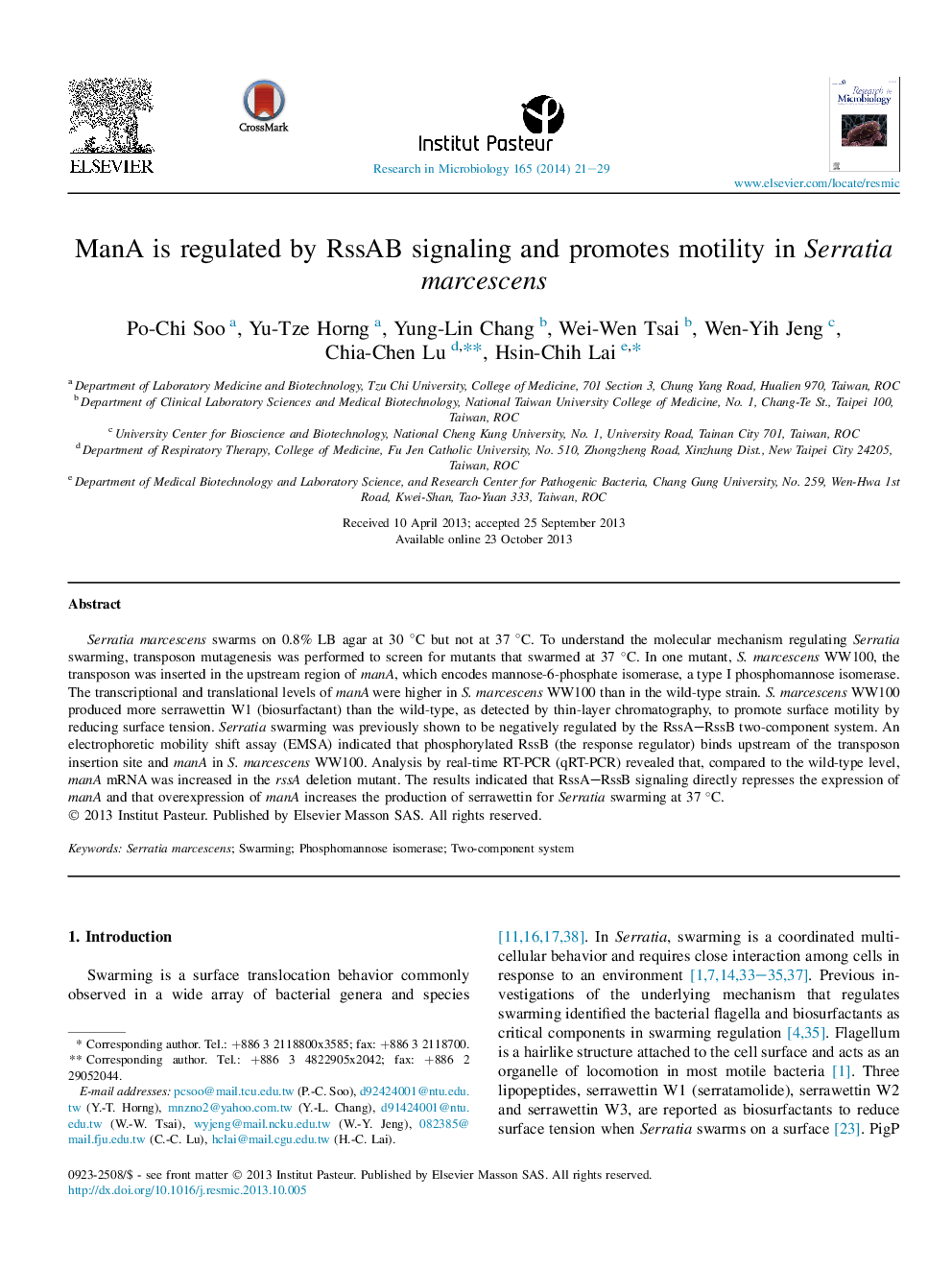| Article ID | Journal | Published Year | Pages | File Type |
|---|---|---|---|---|
| 4358743 | Research in Microbiology | 2014 | 9 Pages |
Serratia marcescens swarms on 0.8% LB agar at 30 °C but not at 37 °C. To understand the molecular mechanism regulating Serratia swarming, transposon mutagenesis was performed to screen for mutants that swarmed at 37 °C. In one mutant, S. marcescens WW100, the transposon was inserted in the upstream region of manA, which encodes mannose-6-phosphate isomerase, a type I phosphomannose isomerase. The transcriptional and translational levels of manA were higher in S. marcescens WW100 than in the wild-type strain. S. marcescens WW100 produced more serrawettin W1 (biosurfactant) than the wild-type, as detected by thin-layer chromatography, to promote surface motility by reducing surface tension. Serratia swarming was previously shown to be negatively regulated by the RssA–RssB two-component system. An electrophoretic mobility shift assay (EMSA) indicated that phosphorylated RssB (the response regulator) binds upstream of the transposon insertion site and manA in S. marcescens WW100. Analysis by real-time RT-PCR (qRT-PCR) revealed that, compared to the wild-type level, manA mRNA was increased in the rssA deletion mutant. The results indicated that RssA–RssB signaling directly represses the expression of manA and that overexpression of manA increases the production of serrawettin for Serratia swarming at 37 °C.
